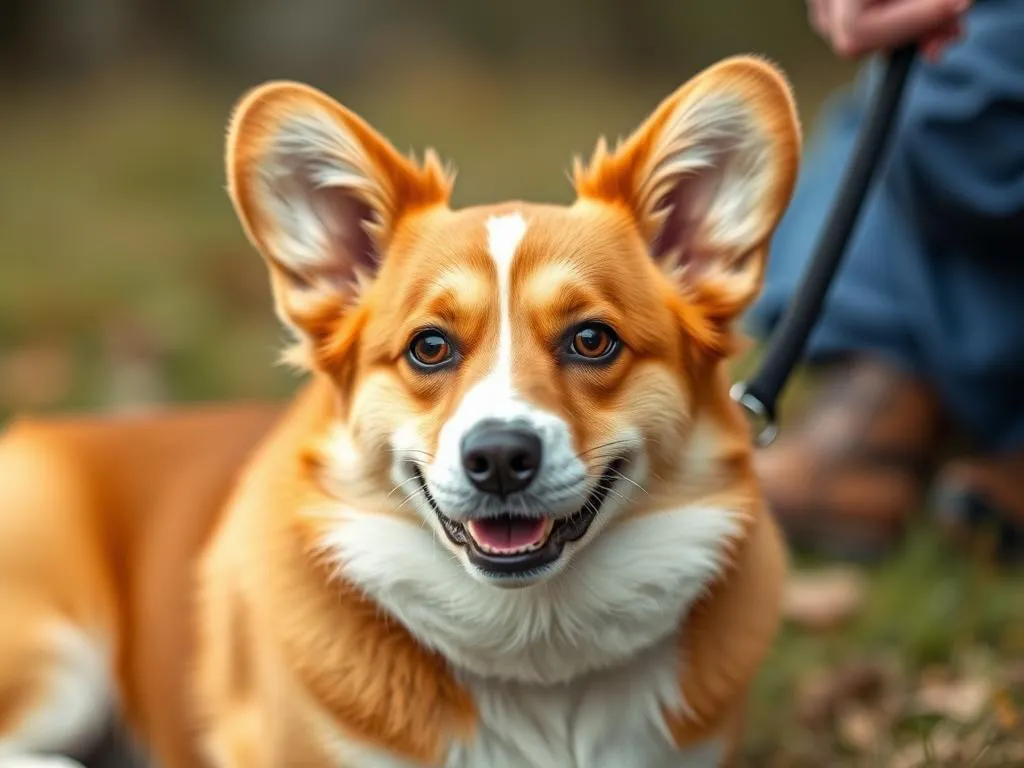
Introduction
The Corgi is a beloved breed known for its endearing personality, short legs, and fluffy backside. These dogs, originally bred for herding, are not only adorable but also intelligent and eager to please. Training a Corgi is essential, not only to ensure their good behavior but also to enhance the bond between you and your furry friend. With their unique characteristics, training a Corgi can come with its own set of challenges, but with patience and the right techniques, you can successfully teach them essential commands and good behavior.
Understanding Corgis
Characteristics of Corgis
Corgis are small, sturdy dogs with a distinctive appearance. They typically weigh between 25 to 30 pounds and stand about 10 to 12 inches tall. Their most notable features include their large ears, expressive eyes, and a long body with a short tail.
In terms of temperament, Corgis are known for their playful and affectionate nature. They are intelligent, which makes them quick learners, but they can also exhibit a streak of stubbornness. This duality means that while training can be rewarding, it can also be challenging, especially for first-time dog owners.
Common Challenges in Corgi Training
Training a Corgi can present specific challenges:
- Stubbornness: Corgis are known for their independent thinking, which can sometimes translate to stubbornness during training sessions.
- High Energy Levels: These dogs are energetic and require regular exercise. Without sufficient physical activity, they may become bored and exhibit undesirable behaviors.
- Herding Instincts: As natural herders, Corgis may attempt to herd children, other pets, or even adults, leading to nipping or chasing behaviors that need to be addressed through training.
Preparing for Training
Essential Supplies
Before diving into training, gather the necessary supplies:
- Leashes, Collars, and Harnesses: A sturdy leash and collar or harness are essential for control during training sessions.
- Training Treats and Toys: Use small, tasty treats that your Corgi loves to motivate them during training. Interactive toys can also be helpful for keeping their attention.
Creating a Positive Training Environment
Choosing the right location for training is crucial. Select a quiet area free from distractions, such as other pets or loud noises. This will help your Corgi focus on you and the task at hand.
Setting Realistic Goals
Establish both short-term and long-term training goals. Short-term goals may include teaching basic commands, while long-term goals could involve advanced tricks or socialization skills. Remember that each Corgi is unique; understanding their individual personality will guide you in setting appropriate goals.
Basic Commands
Teaching Sit
Teaching your Corgi to sit is one of the foundational commands:
- Get Their Attention: Hold a treat close to your Corgi’s nose.
- Move the Treat: Slowly move the treat upward, encouraging them to lift their head.
- Sit: As their head goes up, their bottom will naturally lower. Once they sit, say “Sit” and reward them with the treat.
- Repeat: Practice this several times a day, gradually phasing out the treat while still rewarding with praise.
Common Mistakes to Avoid: Don’t rush the process. If your Corgi doesn’t sit right away, be patient and repeat the steps. Avoid pushing them down, as this can create resentment.
Teaching Stay
The “Stay” command is vital for safety:
- Start with Sit: Begin with your Corgi in the sitting position.
- Introduce Stay: Open your palm toward them and say “Stay” while taking a step back.
- Reward for Staying: If they remain in place, return to them and reward them with a treat.
- Increase Distance: Gradually increase the distance and duration while reinforcing the command.
Importance of Duration and Distance: Start with short stays and gradually work toward longer durations and greater distances, rewarding them for their success.
Teaching Come
The “Come” command is essential for your Corgi’s safety:
- Use a Leash: Put your Corgi on a leash in a quiet area.
- Get Excited: Squat down and call their name followed by “Come” in an enthusiastic tone.
- Reward Them: When they come to you, reward them immediately with a treat and praise.
- Practice Off-Leash: Once they master it on a leash, practice in a secure area without a leash.
Tips for Reinforcing Recall: Always reward your Corgi when they come to you. This helps reinforce the idea that coming to you is a positive experience.
Advanced Training Techniques
Leash Training
Teaching your Corgi proper leash manners can prevent pulling and make walks enjoyable:
- Start Indoors: Begin training in a distraction-free environment.
- Reward Loose Leash Walking: Every few steps your Corgi walks without pulling, reward them with a treat.
- Use a Stop-and-Go Method: If they start to pull, stop walking. Wait until they return to your side before continuing.
Crate Training
Crate training provides a safe space for your Corgi:
- Introduce the Crate: Place the crate in a common area with the door open. Encourage your Corgi to explore it with treats.
- Create Positive Associations: Feed them their meals in the crate and provide toys or a comfortable blanket.
- Gradually Increase Time: Start with short periods in the crate, gradually increasing the duration as they become more comfortable.
Socialization
Socializing your Corgi with people and other dogs is crucial for their development:
- Controlled Introductions: Arrange playdates with well-behaved dogs in a controlled environment.
- Expose to New Experiences: Take your Corgi to different environments, such as parks or pet stores, to expose them to various sights and sounds.
- Positive Reinforcement: Reward your Corgi for positive interactions to reinforce good behavior.
Behavioral Issues and Solutions
Barking
Understanding why your Corgi barks is crucial for addressing excessive barking:
- Reasons for Barking: Corgis may bark due to boredom, fear, or to alert you. Identifying the cause is the first step in managing the behavior.
- Training Techniques: Use commands like “Quiet” or provide distractions like toys when they bark unnecessarily. Reward them when they stop barking.
Chewing and Destructive Behavior
Excessive chewing can be a sign of boredom or anxiety:
- Causes of Chewing: Puppies often chew as a natural behavior, while adult Corgis may chew due to boredom.
- Training Methods: Provide appropriate chew toys and redirect their attention when they start chewing on furniture. Reward them for using their toys instead.
Aggression
Identifying and managing aggressive behaviors is crucial for safety:
- Identifying Aggressive Behaviors: Aggression may manifest as growling, snapping, or lunging. Take these signs seriously.
- Training Strategies: Consult a professional trainer for severe cases, but generally, socialization and positive reinforcement can help modify aggressive behaviors. Reward calm behavior and avoid situations where aggression is likely.
Positive Reinforcement Techniques
The Role of Rewards
Understanding how to effectively use rewards is essential for successful training:
- Types of Rewards: Use treats, verbal praise, or playtime as rewards. Find what motivates your Corgi the most.
- Timing and Consistency: Always reward immediately after the desired behavior to create a clear association. Consistency in commands and rewards is key.
Clicker Training
Clicker training is an effective training method that uses a distinct sound to mark desired behaviors:
- What is Clicker Training?: A clicker is a small device that makes a clicking sound when pressed. It’s used to mark the exact moment your Corgi performs the desired behavior.
- Implementation: Begin by clicking and treating when your Corgi performs a behavior you want to reinforce. Over time, associate the click with verbal commands.
Maintaining Training Consistency
Daily Training Routines
Incorporating training into your daily life is vital for reinforcing lessons:
- Incorporate into Daily Life: Use everyday situations as training opportunities. For example, ask for a “Sit” before meals or “Stay” before going out the door.
- Duration and Frequency: Short, frequent sessions (5-10 minutes) are more effective than long, infrequent sessions.
Involving Family Members
Training should be a family effort to ensure consistency:
- Unified Training Approach: Ensure all family members use the same commands and techniques. This avoids confusing your Corgi.
- Tips for Family Involvement: Designate training sessions for different family members to help your Corgi learn to respond to various people.
Conclusion
Training your Corgi is a rewarding journey that strengthens your bond and enhances their behavior. By understanding their unique characteristics, preparing adequately, and employing effective training techniques, you can successfully navigate the challenges of Corgi training. Remember to be patient, consistent, and always use positive reinforcement. The time and effort you invest in training will pay off with a well-behaved and happy Corgi companion.
As you embark on this training journey, keep in mind that every Corgi is unique, and what works for one may not work for another. Stay flexible and adapt your training strategies to meet your dog’s individual needs. Enjoy the process, and soon you’ll have a Corgi that not only listens but also loves to learn!









